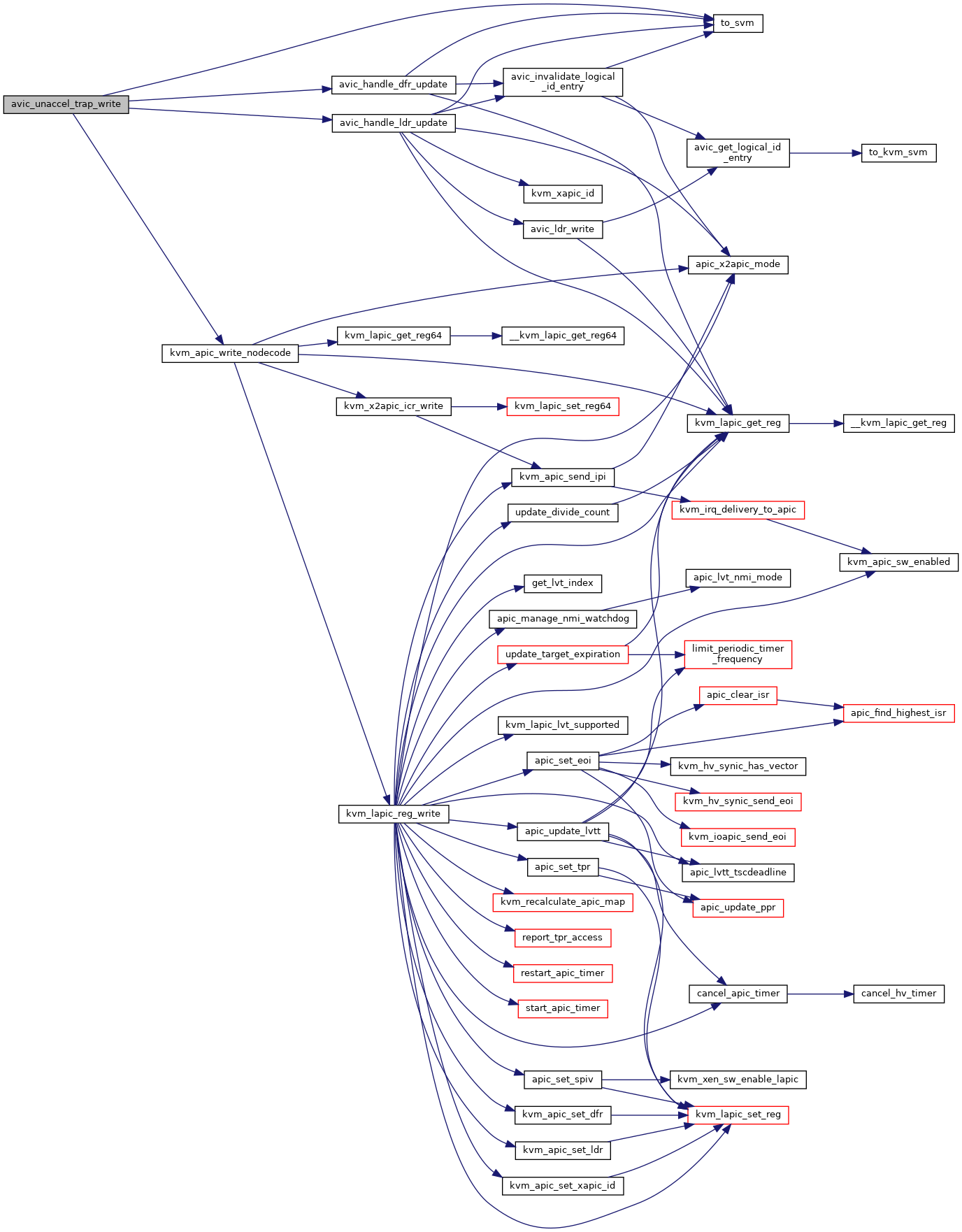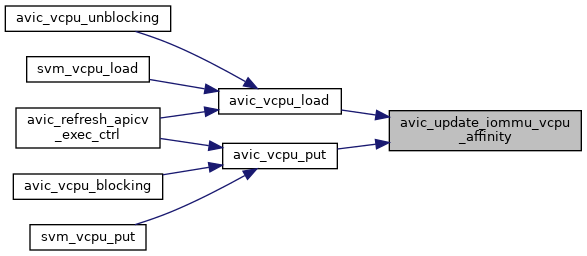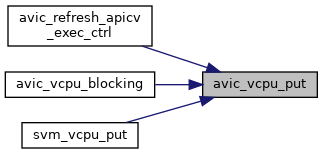#include <linux/kvm_types.h>#include <linux/hashtable.h>#include <linux/amd-iommu.h>#include <linux/kvm_host.h>#include <asm/irq_remapping.h>#include "trace.h"#include "lapic.h"#include "x86.h"#include "irq.h"#include "svm.h"
Go to the source code of this file.
Classes | |
| struct | amd_svm_iommu_ir |
Macros | |
| #define | pr_fmt(fmt) KBUILD_MODNAME ": " fmt |
| #define | AVIC_VCPU_ID_MASK AVIC_PHYSICAL_MAX_INDEX_MASK |
| #define | AVIC_VM_ID_SHIFT HWEIGHT32(AVIC_PHYSICAL_MAX_INDEX_MASK) |
| #define | AVIC_VM_ID_MASK (GENMASK(31, AVIC_VM_ID_SHIFT) >> AVIC_VM_ID_SHIFT) |
| #define | AVIC_GATAG_TO_VMID(x) ((x >> AVIC_VM_ID_SHIFT) & AVIC_VM_ID_MASK) |
| #define | AVIC_GATAG_TO_VCPUID(x) (x & AVIC_VCPU_ID_MASK) |
| #define | __AVIC_GATAG(vm_id, vcpu_id) |
| #define | AVIC_GATAG(vm_id, vcpu_id) |
| #define | SVM_VM_DATA_HASH_BITS 8 |
Functions | |
| module_param_unsafe (force_avic, bool, 0444) | |
| static | DEFINE_HASHTABLE (svm_vm_data_hash, SVM_VM_DATA_HASH_BITS) |
| static | DEFINE_SPINLOCK (svm_vm_data_hash_lock) |
| static void | avic_activate_vmcb (struct vcpu_svm *svm) |
| static void | avic_deactivate_vmcb (struct vcpu_svm *svm) |
| int | avic_ga_log_notifier (u32 ga_tag) |
| void | avic_vm_destroy (struct kvm *kvm) |
| int | avic_vm_init (struct kvm *kvm) |
| void | avic_init_vmcb (struct vcpu_svm *svm, struct vmcb *vmcb) |
| static u64 * | avic_get_physical_id_entry (struct kvm_vcpu *vcpu, unsigned int index) |
| static int | avic_init_backing_page (struct kvm_vcpu *vcpu) |
| void | avic_ring_doorbell (struct kvm_vcpu *vcpu) |
| static void | avic_kick_vcpu (struct kvm_vcpu *vcpu, u32 icrl) |
| static void | avic_kick_vcpu_by_physical_id (struct kvm *kvm, u32 physical_id, u32 icrl) |
| static void | avic_kick_vcpu_by_logical_id (struct kvm *kvm, u32 *avic_logical_id_table, u32 logid_index, u32 icrl) |
| static int | avic_kick_target_vcpus_fast (struct kvm *kvm, struct kvm_lapic *source, u32 icrl, u32 icrh, u32 index) |
| static void | avic_kick_target_vcpus (struct kvm *kvm, struct kvm_lapic *source, u32 icrl, u32 icrh, u32 index) |
| int | avic_incomplete_ipi_interception (struct kvm_vcpu *vcpu) |
| unsigned long | avic_vcpu_get_apicv_inhibit_reasons (struct kvm_vcpu *vcpu) |
| static u32 * | avic_get_logical_id_entry (struct kvm_vcpu *vcpu, u32 ldr, bool flat) |
| static void | avic_ldr_write (struct kvm_vcpu *vcpu, u8 g_physical_id, u32 ldr) |
| static void | avic_invalidate_logical_id_entry (struct kvm_vcpu *vcpu) |
| static void | avic_handle_ldr_update (struct kvm_vcpu *vcpu) |
| static void | avic_handle_dfr_update (struct kvm_vcpu *vcpu) |
| static int | avic_unaccel_trap_write (struct kvm_vcpu *vcpu) |
| static bool | is_avic_unaccelerated_access_trap (u32 offset) |
| int | avic_unaccelerated_access_interception (struct kvm_vcpu *vcpu) |
| int | avic_init_vcpu (struct vcpu_svm *svm) |
| void | avic_apicv_post_state_restore (struct kvm_vcpu *vcpu) |
| static int | avic_set_pi_irte_mode (struct kvm_vcpu *vcpu, bool activate) |
| static void | svm_ir_list_del (struct vcpu_svm *svm, struct amd_iommu_pi_data *pi) |
| static int | svm_ir_list_add (struct vcpu_svm *svm, struct amd_iommu_pi_data *pi) |
| static int | get_pi_vcpu_info (struct kvm *kvm, struct kvm_kernel_irq_routing_entry *e, struct vcpu_data *vcpu_info, struct vcpu_svm **svm) |
| int | avic_pi_update_irte (struct kvm *kvm, unsigned int host_irq, uint32_t guest_irq, bool set) |
| static int | avic_update_iommu_vcpu_affinity (struct kvm_vcpu *vcpu, int cpu, bool r) |
| void | avic_vcpu_load (struct kvm_vcpu *vcpu, int cpu) |
| void | avic_vcpu_put (struct kvm_vcpu *vcpu) |
| void | avic_refresh_virtual_apic_mode (struct kvm_vcpu *vcpu) |
| void | avic_refresh_apicv_exec_ctrl (struct kvm_vcpu *vcpu) |
| void | avic_vcpu_blocking (struct kvm_vcpu *vcpu) |
| void | avic_vcpu_unblocking (struct kvm_vcpu *vcpu) |
| bool | avic_hardware_setup (void) |
Variables | |
| static bool | force_avic |
| static u32 | next_vm_id = 0 |
| static bool | next_vm_id_wrapped = 0 |
| bool | x2avic_enabled |
Macro Definition Documentation
◆ __AVIC_GATAG
| #define __AVIC_GATAG | ( | vm_id, | |
| vcpu_id | |||
| ) |
◆ AVIC_GATAG
| #define AVIC_GATAG | ( | vm_id, | |
| vcpu_id | |||
| ) |
◆ AVIC_GATAG_TO_VCPUID
| #define AVIC_GATAG_TO_VCPUID | ( | x | ) | (x & AVIC_VCPU_ID_MASK) |
◆ AVIC_GATAG_TO_VMID
| #define AVIC_GATAG_TO_VMID | ( | x | ) | ((x >> AVIC_VM_ID_SHIFT) & AVIC_VM_ID_MASK) |
◆ AVIC_VCPU_ID_MASK
◆ AVIC_VM_ID_MASK
| #define AVIC_VM_ID_MASK (GENMASK(31, AVIC_VM_ID_SHIFT) >> AVIC_VM_ID_SHIFT) |
◆ AVIC_VM_ID_SHIFT
| #define AVIC_VM_ID_SHIFT HWEIGHT32(AVIC_PHYSICAL_MAX_INDEX_MASK) |
◆ pr_fmt
◆ SVM_VM_DATA_HASH_BITS
Function Documentation
◆ avic_activate_vmcb()
|
static |
◆ avic_apicv_post_state_restore()
| void avic_apicv_post_state_restore | ( | struct kvm_vcpu * | vcpu | ) |
Definition at line 738 of file avic.c.
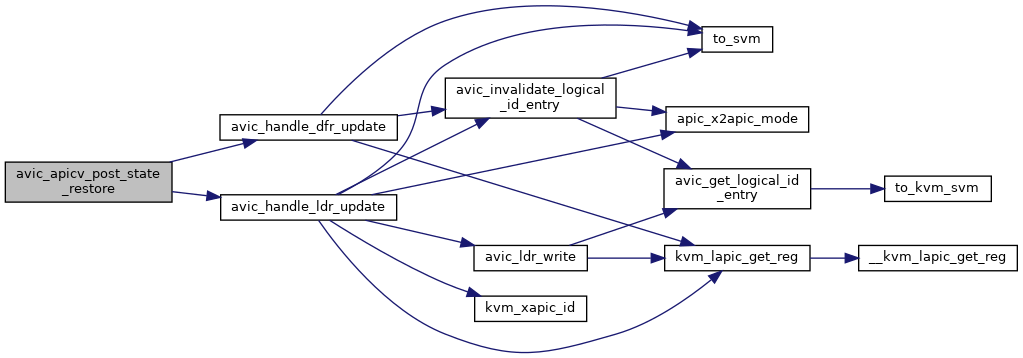

◆ avic_deactivate_vmcb()
|
static |
◆ avic_ga_log_notifier()
| int avic_ga_log_notifier | ( | u32 | ga_tag | ) |
◆ avic_get_logical_id_entry()
|
static |
◆ avic_get_physical_id_entry()
|
static |
◆ avic_handle_dfr_update()
|
static |
Definition at line 629 of file avic.c.


◆ avic_handle_ldr_update()
|
static |
Definition at line 610 of file avic.c.
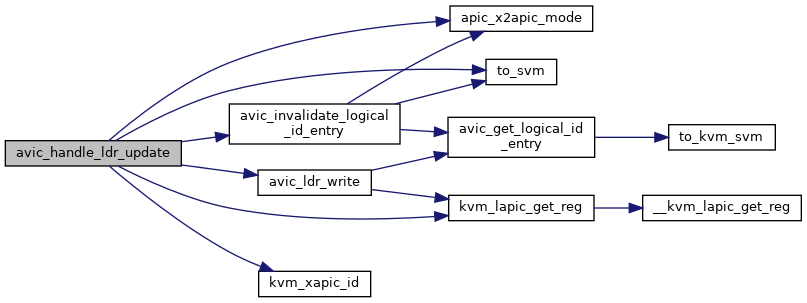

◆ avic_hardware_setup()
| bool avic_hardware_setup | ( | void | ) |
◆ avic_incomplete_ipi_interception()
| int avic_incomplete_ipi_interception | ( | struct kvm_vcpu * | vcpu | ) |
Definition at line 490 of file avic.c.
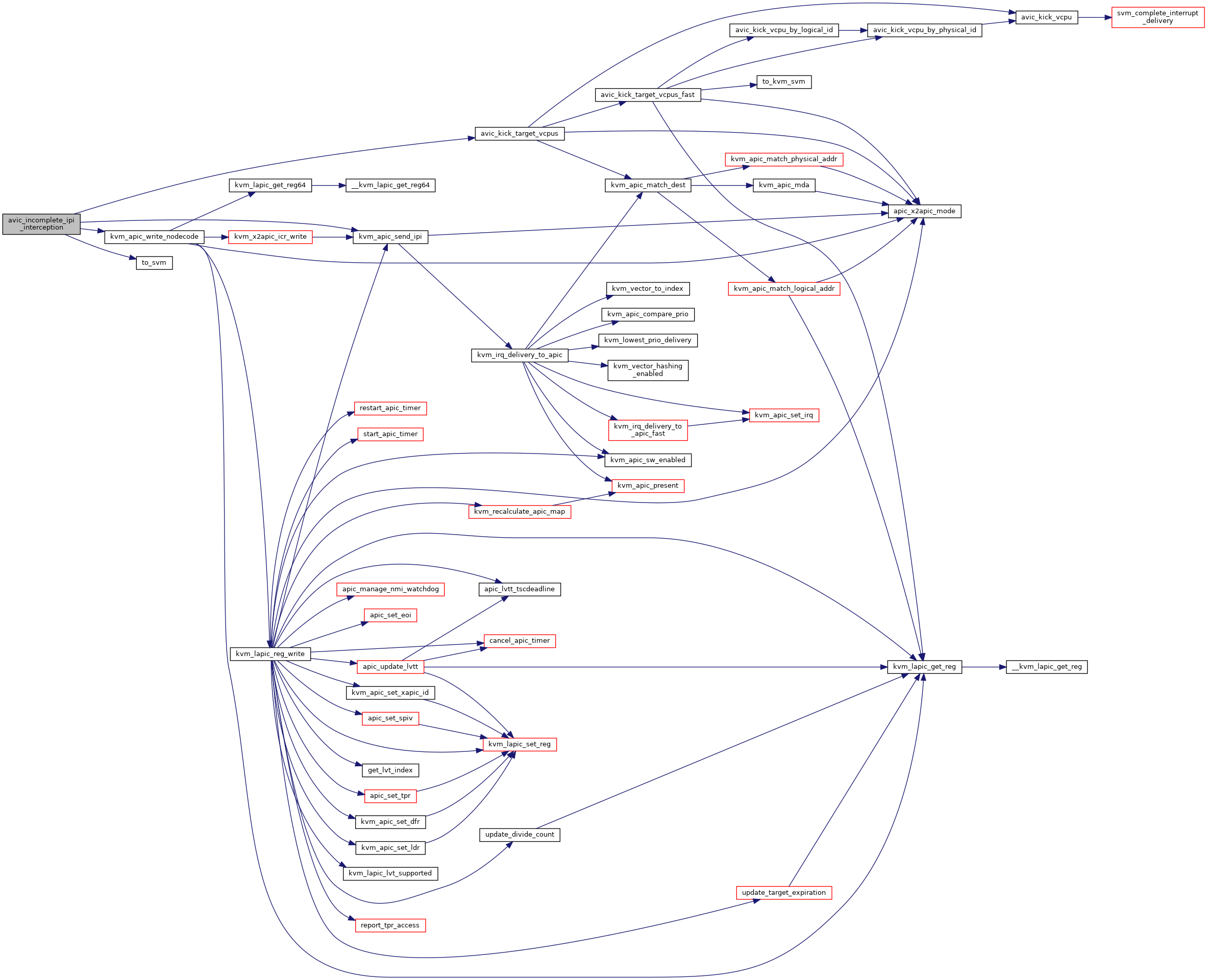
◆ avic_init_backing_page()
|
static |
Definition at line 277 of file avic.c.
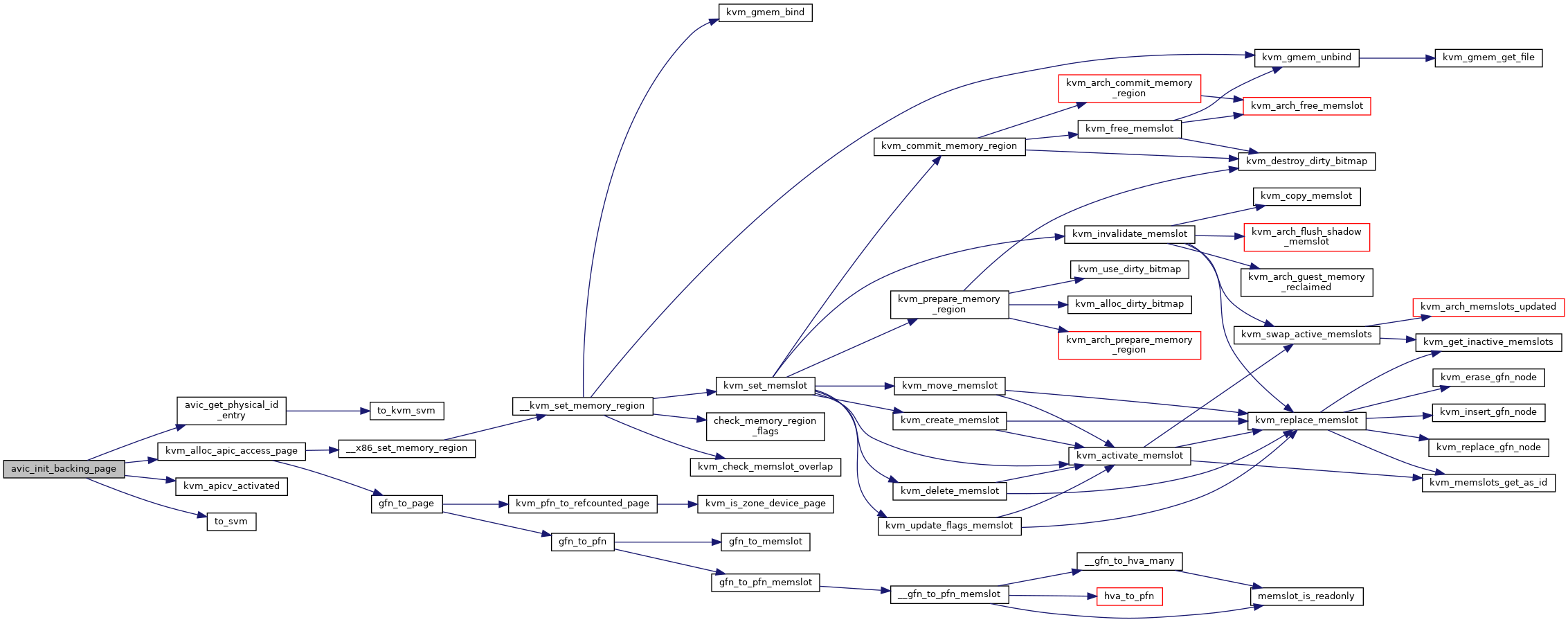

◆ avic_init_vcpu()
| int avic_init_vcpu | ( | struct vcpu_svm * | svm | ) |
Definition at line 719 of file avic.c.
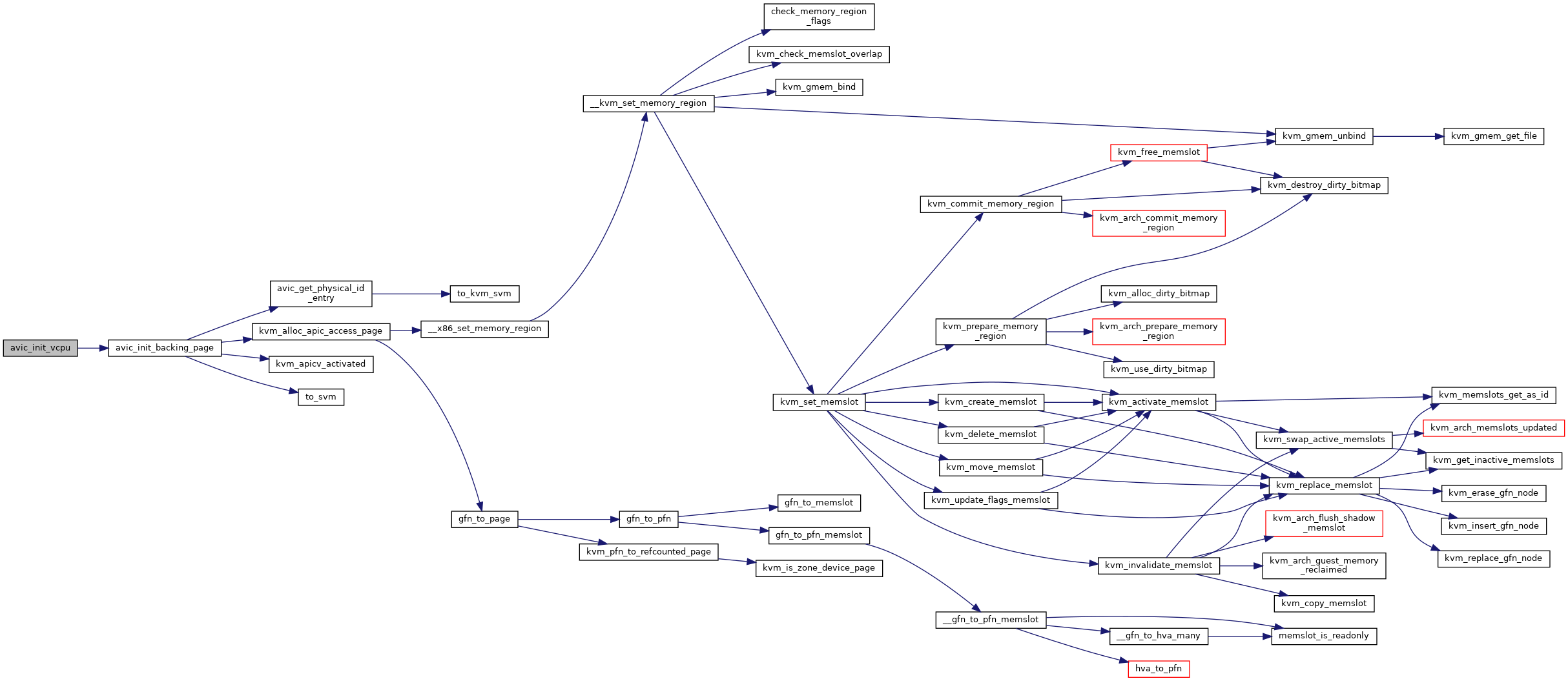

◆ avic_init_vmcb()
| void avic_init_vmcb | ( | struct vcpu_svm * | svm, |
| struct vmcb * | vmcb | ||
| ) |
◆ avic_invalidate_logical_id_entry()
|
static |
Definition at line 595 of file avic.c.


◆ avic_kick_target_vcpus()
|
static |
Definition at line 465 of file avic.c.
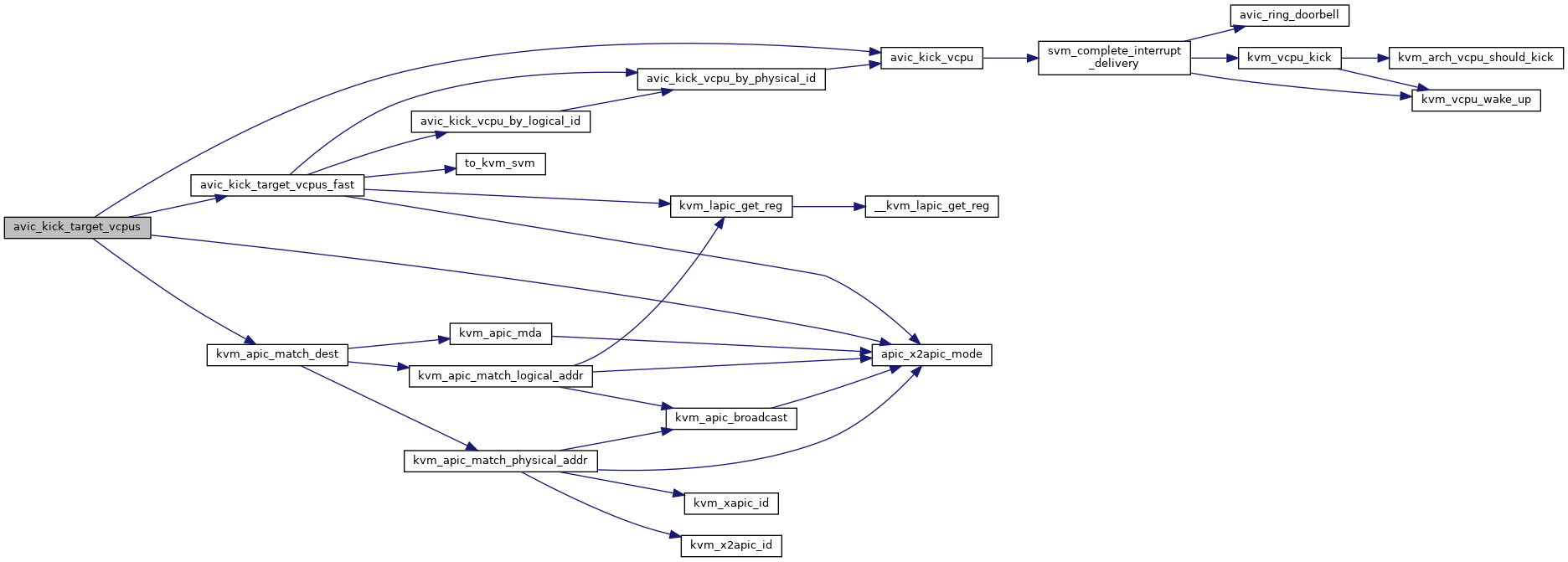

◆ avic_kick_target_vcpus_fast()
|
static |
Definition at line 397 of file avic.c.


◆ avic_kick_vcpu()
|
static |
Definition at line 340 of file avic.c.


◆ avic_kick_vcpu_by_logical_id()
|
static |
◆ avic_kick_vcpu_by_physical_id()
|
static |
◆ avic_ldr_write()
|
static |
◆ avic_pi_update_irte()
| int avic_pi_update_irte | ( | struct kvm * | kvm, |
| unsigned int | host_irq, | ||
| uint32_t | guest_irq, | ||
| bool | set | ||
| ) |
Here, we setup with legacy mode in the following cases:
- When cannot target interrupt to a specific vcpu.
- Unsetting posted interrupt.
- APIC virtualization is disabled for the vcpu.
- IRQ has incompatible delivery mode (SMI, INIT, etc)
Here, we successfully setting up vcpu affinity in IOMMU guest mode. Now, we need to store the posted interrupt information in a per-vcpu ir_list so that we can reference to them directly when we update vcpu scheduling information in IOMMU irte.
Here, pi is used to:
- Tell IOMMU to use legacy mode for this interrupt.
- Retrieve ga_tag of prior interrupt remapping data.
Check if the posted interrupt was previously setup with the guest_mode by checking if the ga_tag was cached. If so, we need to clean up the per-vcpu ir_list.
Definition at line 894 of file avic.c.
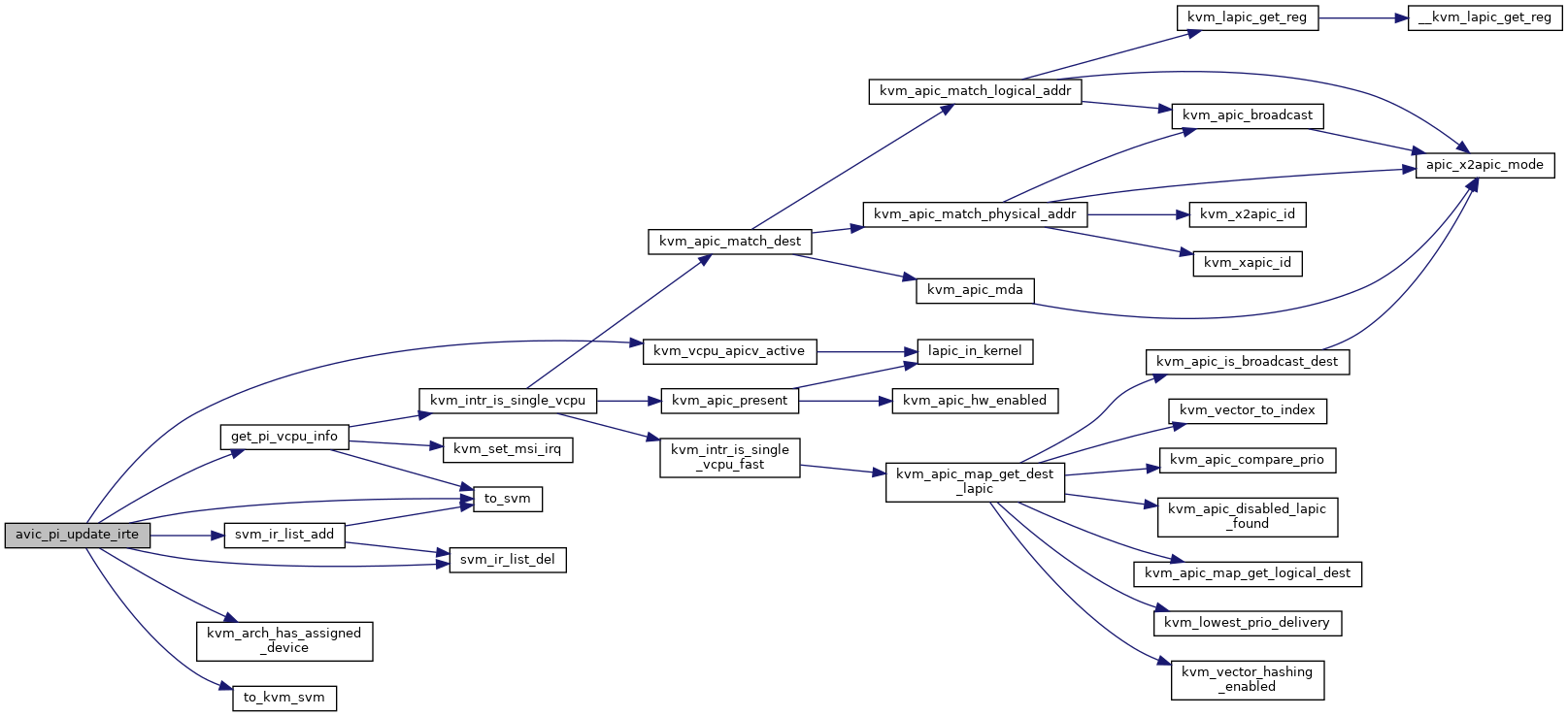
◆ avic_refresh_apicv_exec_ctrl()
| void avic_refresh_apicv_exec_ctrl | ( | struct kvm_vcpu * | vcpu | ) |
Definition at line 1136 of file avic.c.
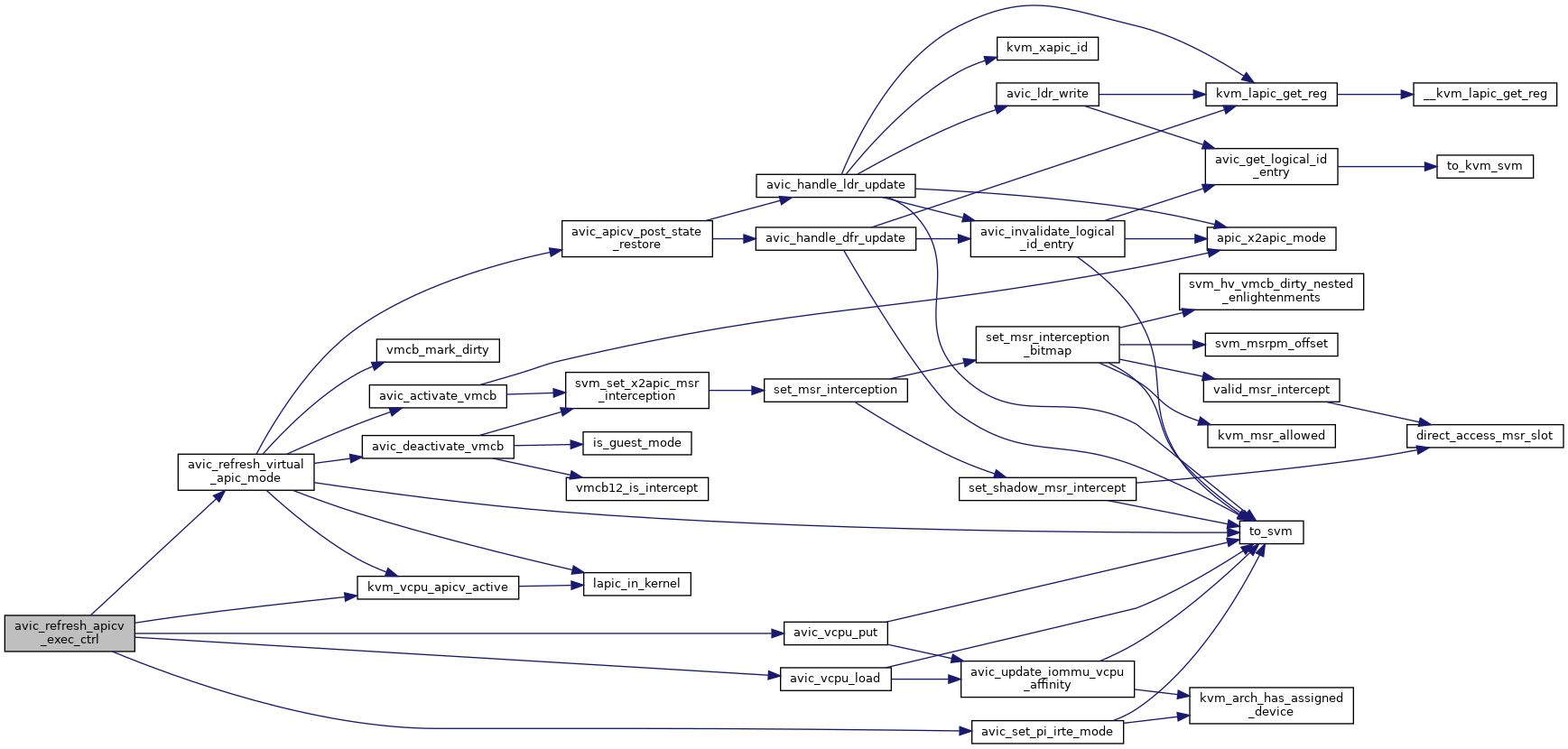
◆ avic_refresh_virtual_apic_mode()
| void avic_refresh_virtual_apic_mode | ( | struct kvm_vcpu * | vcpu | ) |
During AVIC temporary deactivation, guest could update APIC ID, DFR and LDR registers, which would not be trapped by avic_unaccelerated_access_interception(). In this case, we need to check and update the AVIC logical APIC ID table accordingly before re-activating.
Definition at line 1112 of file avic.c.
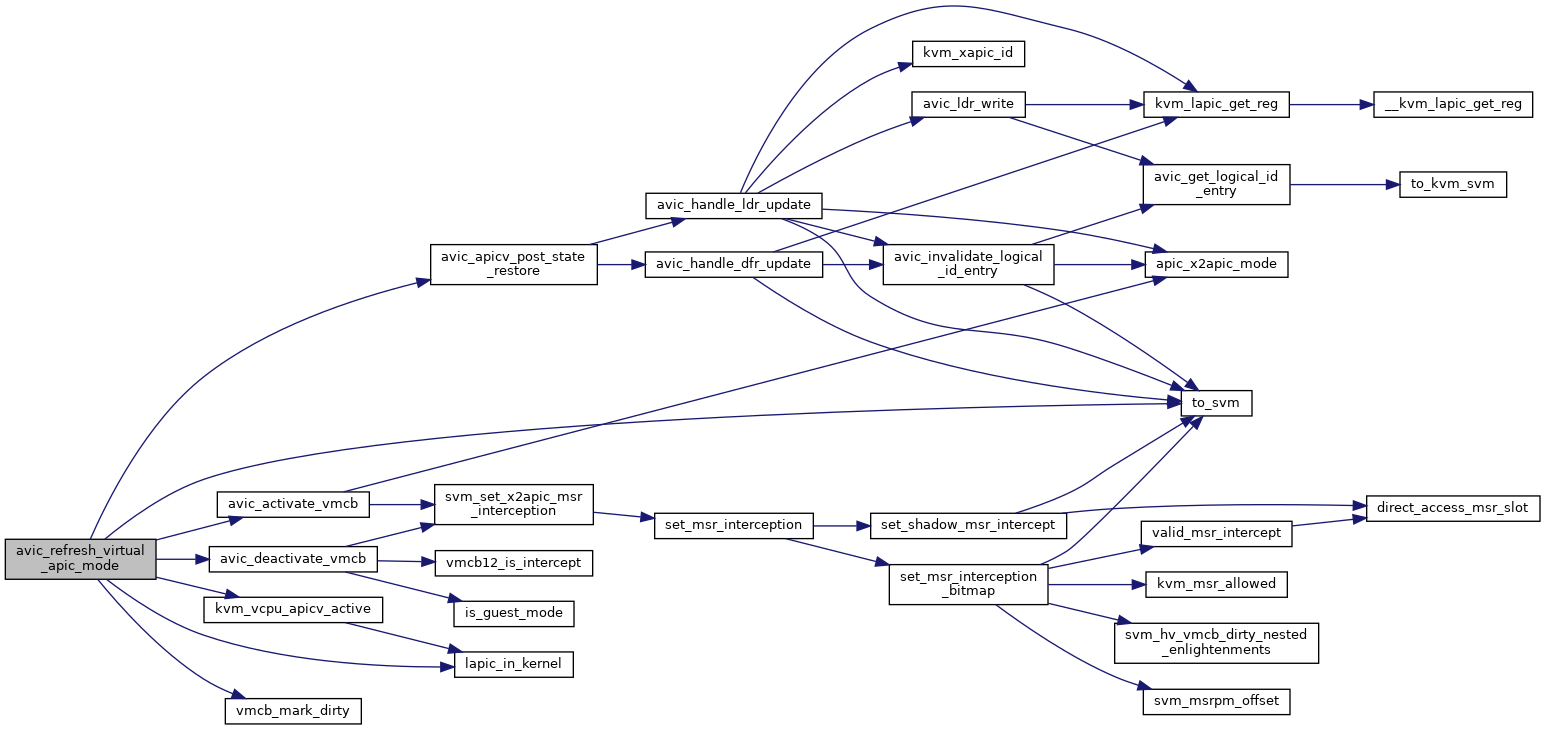

◆ avic_ring_doorbell()
| void avic_ring_doorbell | ( | struct kvm_vcpu * | vcpu | ) |
◆ avic_set_pi_irte_mode()
|
static |
◆ avic_unaccel_trap_write()
|
static |
◆ avic_unaccelerated_access_interception()
| int avic_unaccelerated_access_interception | ( | struct kvm_vcpu * | vcpu | ) |
Definition at line 693 of file avic.c.
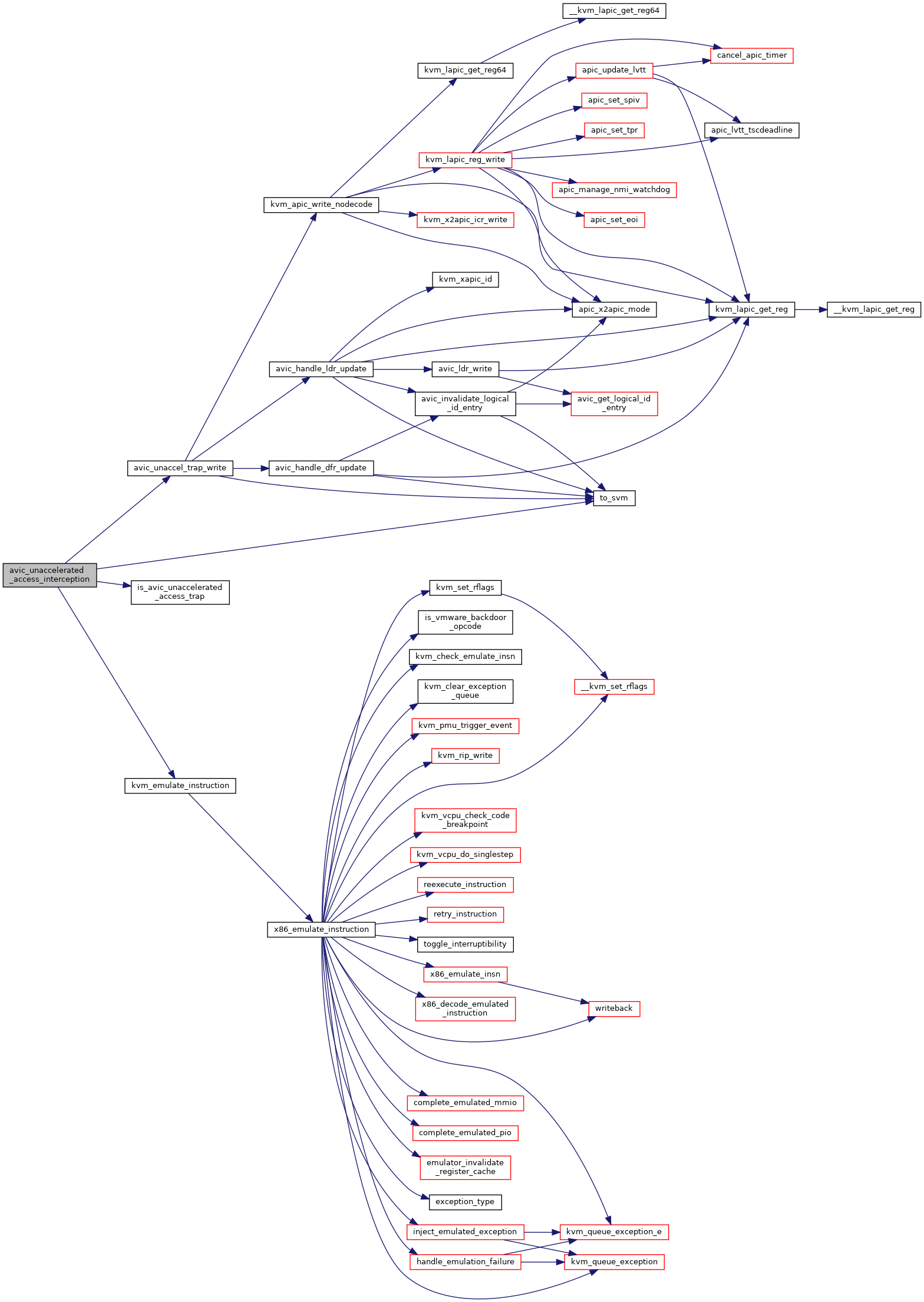
◆ avic_update_iommu_vcpu_affinity()
|
inlinestatic |
◆ avic_vcpu_blocking()
| void avic_vcpu_blocking | ( | struct kvm_vcpu * | vcpu | ) |
◆ avic_vcpu_get_apicv_inhibit_reasons()
| unsigned long avic_vcpu_get_apicv_inhibit_reasons | ( | struct kvm_vcpu * | vcpu | ) |
◆ avic_vcpu_load()
| void avic_vcpu_load | ( | struct kvm_vcpu * | vcpu, |
| int | cpu | ||
| ) |
Definition at line 1028 of file avic.c.

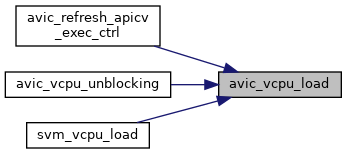
◆ avic_vcpu_put()
| void avic_vcpu_put | ( | struct kvm_vcpu * | vcpu | ) |
◆ avic_vcpu_unblocking()
| void avic_vcpu_unblocking | ( | struct kvm_vcpu * | vcpu | ) |
◆ avic_vm_destroy()
| void avic_vm_destroy | ( | struct kvm * | kvm | ) |
◆ avic_vm_init()
| int avic_vm_init | ( | struct kvm * | kvm | ) |
◆ DEFINE_HASHTABLE()
|
static |
◆ DEFINE_SPINLOCK()
|
static |
◆ get_pi_vcpu_info()
|
static |
Definition at line 861 of file avic.c.
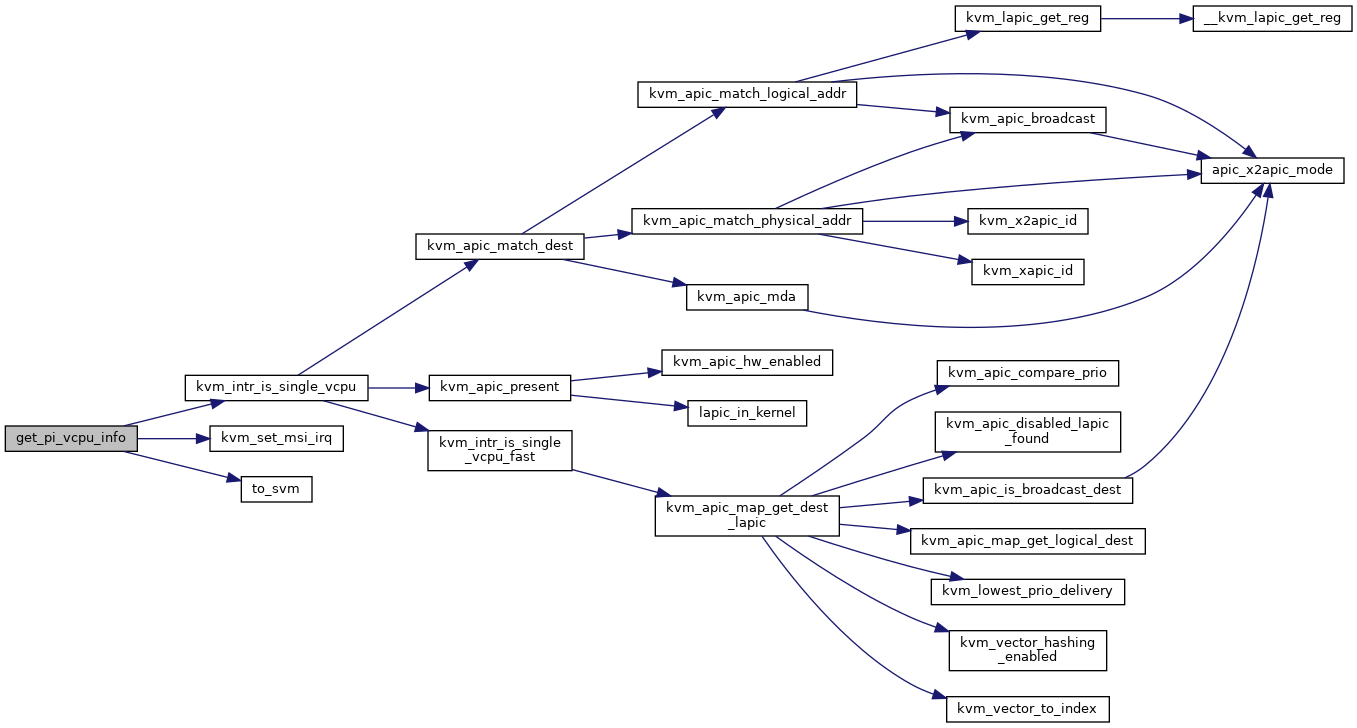

◆ is_avic_unaccelerated_access_trap()
|
static |
◆ module_param_unsafe()
| module_param_unsafe | ( | force_avic | , |
| bool | , | ||
| 0444 | |||
| ) |
◆ svm_ir_list_add()
|
static |
In some cases, the existing irte is updated and re-set, so we need to check here if it's already been * added to the ir_list.
Allocating new amd_iommu_pi_data, which will get add to the per-vcpu ir_list.
Definition at line 792 of file avic.c.


◆ svm_ir_list_del()
|
static |





















